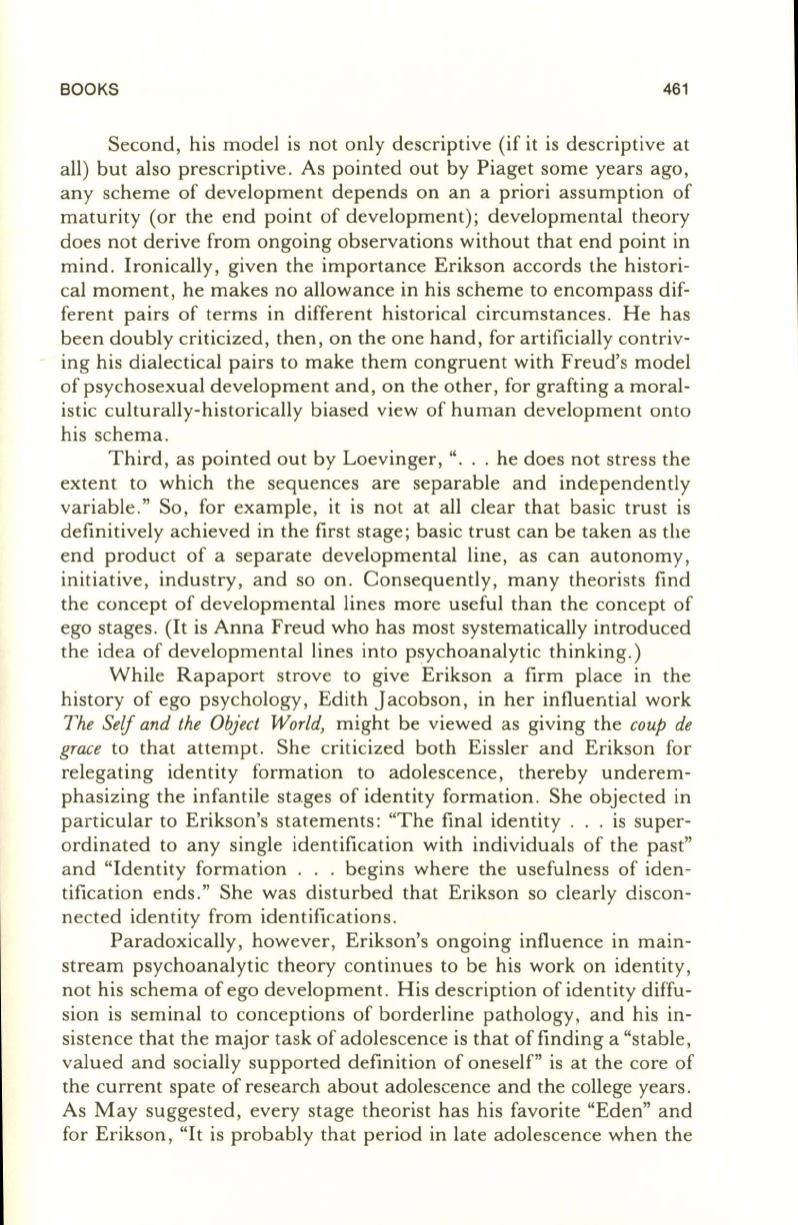
BOOKS
461
Second, his model is not only descriptive (if it is descriptive at
all) but also prescriptive . As pointed out by Piaget some years ago,
any scheme of development depends on an a priori assumption of
maturity (or the end point of development); developmental theory
does not derive from ongoing observations without that end point in
mind. Ironically, given the importance Erikson accords the histori–
cal moment, he makes no allowance in his scheme to encompass dif–
ferent pairs of terms in different historical circumstances . He has
been doubly criticized, then, on the one hand, for artificially contriv–
ing his dialectical pairs to make them congruent with Freud's model
of psychosexual development and, on the other, for grafting a moral–
istic culturally-historically biased view of human development onto
his schema.
Third, as pointed out by Loevinger, "... he does not stress the
extent to which the sequences are separable and independently
variable." So , for example , it is not at all clear that basic trust is
definitively achieved in the first stage; basic trust can be taken as the
end product of a separate developmental line, as can autonomy,
initiative, industry, and so on. Consequently, many theorists find
the concept of developmental lines more useful than the concept of
ego stages .
(It
is Anna Freud who has most systematically introduced
the idea of developmental lines into psychoanalytic thinking.)
While Rapaport strove to give Erikson a firm place in the
history of ego psychology , Edith Jacobson, in her influential work
The Self and the Object World,
might be viewed as giving the
coup de
grace
to that attempt. She criticized both Eissler and Erikson for
relegating identity formation to adolescence, thereby underem–
phasizing the infantile stages of identity formation. She objected in
particular to Erikson's statements : "The final identity ... is super–
ordinated to any single identification with individuals of the past"
and "Identity formation . . . begins where the usefulness of iden–
tification ends." She was disturbed that Erikson so clearly discon–
nected identity from identifications .
Paradoxically , however, Erikson's ongoing influence in main–
stream psychoanalytic theory continues to be his work on identity,
not his schema of ego development. His description of identity diffu–
sion is seminal to conceptions of borderline pathology, and his in–
sistence that the major task of adolescence is that of finding a "stable,
valued and socially supported definition of oneself" is at the core of
the current spate of research about adolescence and the college years.
As May suggested, every stage theorist has his favorite "Eden" and
for Erikson ,
"It
is probably that period in late adolescence when the


